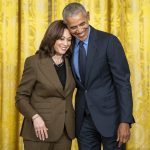Donald Trump has set the stage for what he has dubbed “Liberation Day,” a bold declaration that aims to shake up trade relations with India and other countries that might have been treating American exports like the kid left out of a schoolyard game. During a recent press conference, Trump made it clear that he’s expecting India to slash its tariffs significantly—an act that would not only make trade more equitable but also serve as a hopeful signal to other nations that have indulged in unfair tariff practices against the U.S.
While Trump was busy throwing down the gauntlet, White House Press Secretary Karoline Leavitt weighed in with a laundry list of grievances against India and its tariff practices. According to Leavitt, countries like India have been cashing in for too long at the expense of American workers. With absurd tariffs on goods ranging from dairy to rice, it’s no wonder American businesses struggle while foreign markets thrive. Leavitt urged that it’s high time these nations learn the meaning of reciprocity.
Trump Claims India Will ‘Drop Tariffs Substantially’ https://t.co/Y2BgozeiT4
— Steve Ferguson (@lsferguson) April 2, 2025
The stakes are undeniably high as representatives from both India and the U.S. recently gathered in New Delhi for trade talks. Yet, despite the buzz of potential diplomatic breakthroughs, India has been slow to deliver on immediate concessions regarding tariffs, leaving the Trump administration holding the bag. Whispers in the Indian media suggest that emergency measures might soon be on the table, particularly concerning tariffs on U.S. automobiles, electronics, and medical products. If this happens, it would be a welcome shift, but skepticism remains.
Meanwhile, the numbers tell a story of stark imbalance. For instance, U.S. goods face an average tariff rate of 7.7 percent in India, while Indian exports to the U.S. enjoy a mere 2.8 percent duty. Talk about a discrepancy! The disparity becomes even more laughable when examining farm exports, where American agricultural goods are handed a staggering 37.7 percent duty upon entry into India, while India’s exports face the comparatively paltry 5.3 percent. It’s almost like they’re trying to sell ice to Eskimos while jacking up the prices.
As the April 2 deadline nears, India might have to rethink its strategy. While discussions around non-tariff barriers are already making headlines, such as hefty regulations and permits that stifle American companies, the reality is that the undeniable tariff disparities are the real hindrance to fair trade. Perhaps India would do well to listen to Trump’s cue about fairness, or risk witnessing the wrath of American tariffs that would make their ambassadors question their life choices.




